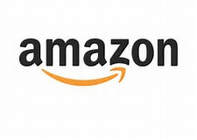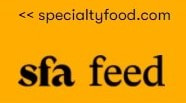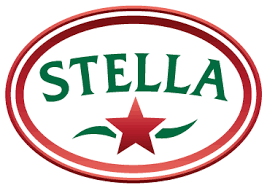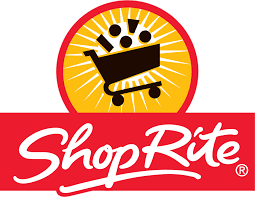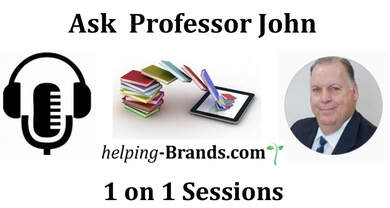Founder - John R. Fugazzie | email [email protected] | Linkedin Priofile
See my articles shared on LinkedIn |
Strategic Business Advice
Strategic Business Advice 1 on 1 with John R. Fugazzie
Articles of significance:US farm income to see largest-ever drop
A combination of high expenses and weak prices for major crops and livestock are expected to lead to an estimated 23% decline in profits. |
Marketing/Business Leadership
Community Leadership
Food Category Expertise
www.FreshFruitPortal.comNostalgic Brands |
Food Needs:
Food Sustainability
See more on link
The History of Cheese
The production of cheese predates recorded history, beginning well over 7,000 years ago. Humans likely developed cheese and other dairy foods by accident, as a result of storing and transporting milk in bladders made of ruminants' stomachs, as their inherent supply of rennet would encourage curdling. There is no conclusive evidence indicating where cheese-making originated, possibly Europe, or Central Asia, the Middle East, or the Sahara.
Earliest originsIt is unknown when cheese was first made. The earliest direct evidence for cheesemaking is now being found in excavated clay sieves (holed pottery) over seven thousand years old, for example in Kujawy, Poland, and the Dalmatian coast in Croatia, the latter with dried remains which chemical analysis suggests was cheese. Shards of holed pottery were also found in Urnfield pile-dwellings on Lake Neuchatel in Switzerland and are hypothesized to be cheese-strainers; they date back to roughly 8,000 years ago.
For preservation purposes, cheese-making may have begun by the pressing and salting of curdled milk. Animal skins and inflated internal organs already provided storage vessels for a range of foodstuffs. Curdling milk in an animal's stomach made solid and better-textured curds, which could easily have led to the conscious addition of rennet.
Hard salted cheese is likely to have accompanied dairying from the outset. It is the only form in which milk can be kept in a hot climate. Dairying existed around 4,000 BC in the grasslands of the Sahara. Cheese produced in Europe, where climates are cooler than in the Middle East, required less salt for preservation. With less salt and acidity, the cheese became a suitable environment for useful microbes and molds, giving aged cheeses their pronounced and interesting flavors.
The earliest written evidence of cheese (GA.UAR) is the Sumerian cuneiform texts of Third Dynasty of Ur, dated at the early second millennium BC. The earliest cheeses were sour and salty and similar in texture to rustic cottage cheese or present-day feta. In Late Bronze Age Minoan-Mycenaean Crete, Linear B tablets recorded the inventorying of cheese, (Mycenaean Greek in Linear B: 𐀶𐀫, tu-ro; later Greek: τυρός) flocks and shepherds.
An Arab legend attributes the discovery of cheese to an Arab trader who used this method of storing milk. However, cheese was already well known among the Sumerians.
For preservation purposes, cheese-making may have begun by the pressing and salting of curdled milk. Animal skins and inflated internal organs already provided storage vessels for a range of foodstuffs. Curdling milk in an animal's stomach made solid and better-textured curds, which could easily have led to the conscious addition of rennet.
Hard salted cheese is likely to have accompanied dairying from the outset. It is the only form in which milk can be kept in a hot climate. Dairying existed around 4,000 BC in the grasslands of the Sahara. Cheese produced in Europe, where climates are cooler than in the Middle East, required less salt for preservation. With less salt and acidity, the cheese became a suitable environment for useful microbes and molds, giving aged cheeses their pronounced and interesting flavors.
The earliest written evidence of cheese (GA.UAR) is the Sumerian cuneiform texts of Third Dynasty of Ur, dated at the early second millennium BC. The earliest cheeses were sour and salty and similar in texture to rustic cottage cheese or present-day feta. In Late Bronze Age Minoan-Mycenaean Crete, Linear B tablets recorded the inventorying of cheese, (Mycenaean Greek in Linear B: 𐀶𐀫, tu-ro; later Greek: τυρός) flocks and shepherds.
An Arab legend attributes the discovery of cheese to an Arab trader who used this method of storing milk. However, cheese was already well known among the Sumerians.
|
Wal-mart Stores, Inc. Founded: 1945
About Walmart What started small, with a single discount store and the simple idea of selling more for less, has grown over the last 50 years into the largest retailer in the world. Each week, approximately 220 million customers and members visit approximately 10,500 stores and clubs under 48 banners in 24 countries and eCommerce websites. With fiscal year 2021 revenue of $559 billion, Walmart employs over 2.3 million associates worldwide. Walmart continues to be a leader in sustainability, corporate philanthropy and employment opportunity. It’s all part of our unwavering commitment to creating opportunities and bringing value to customers and communities around the world. |
|
Tesco PLC
Founded: 1919 Country of Origin: England Revenue: 64.76 billion GBP (2020) As a leading retailer, with over 400,000 colleagues, we serve millions of customers every week, in our stores and online. About Tesco PLC |
Costco Wholesale Corporation
Founded: 1976 Country of Origin: United States 2020, Costco generated 122.14 billion U.S. dollars in revenue from their operations in the United States. |
|
Carrefour S.A.Founded: 1958
Country of Origin: France Revenue: Carrefour serves a huge number of consumers in countries like Argentina, Brazil, China, United Arab Emirates, Dominican Republic, Qatar and Saudi Arabia etc. It’s main market in Europe and it also serves some parts of North Africa and Asia. It has the largest chain of Hypermarkets – 1,452. It is situated in more than ten thousand locations worldwide. |
Kroger Co.Founded: 1883
Country of Origin: United States About Wikipedia Kroger Comp Sales Up 4% in Q4 2021, Margin Rate StableGrocer reports record performance in fiscal 2021
|
|
Lidl Stiftung & Co. KG
Founded: 1930 Country of Origin: Germany Revenue: Lidl is another German giant in the retailing industry and a chief competitor of Aldi. Its a discount supermarket chain that operates globally and hails from Neckarsulm, Germany. Its presence is in over 20 countries and it has opened stores in excess of 9800. |
Metro AG Founded: 1964 Country of Origin: Germany Revenue: It is labelled as one of the most globalised retailer in the world and has the largest market share in the home market. It functions in 25 European countries, 5 Asian countries and in 1 country in Africa. Hailing from Dusseldorf, Germany, it has 384 hypermarkets, 137 department stores, and 948 consumer electronics stores worldwide. The Company is also participates in real estate (Metro Properties), logistics (Metro Logistics), Information Technology (Metro Systems) and advertising services. |
|
Aldi Einkauf GmbH & Co. oHG
Founded: 1946 Country of Origin: Germany Revenue: Aldi is another discount supermarket store chain which operates worldwide in 18 countries with over 9,000 stores to its name and is one of the world’s largets privately owned companies. . Wikipedia Headquarters: Essen, Germany |
|
Target Corporation
Founded: 1902 Country of Origin: United States Revenue: |
|
About | CVS Health
Founded: 1892 Country of Origin: United States Revenue: https://en.wikipedia.org/wiki/CVS_Pharmacy |
Albertsons Companies LLC
Founded 1939 Headquarters Boise, Idaho, U.S. About Us | Albertsons Owner Cerberus Capital Management Subsidiaries Safeway Inc., Acme Markets, Shaw's and Star Market, Vons Tom Thumb Food & Pharmacy Randall's Jewel-Osco Website www.albertsons.com |
|
Publix, the largest employee-owned company in the U.S. with more than 225,000 employees, currently operates 1,297 stores in Florida, Georgia, Alabama, Tennessee, South Carolina, North Carolina and Virginia. For 24 consecutive years, the company has been recognized by Fortune as a great place to work.
For more information, visit corporate.publix.com. |
Koninklijke Ahold Delhaize N.V., commonly known as Ahold Delhaize, is a Dutch multinational company. Its name comes from a fusion between Ahold and Delhaize. Its business format includes supermarkets, convenience stores, hypermarkets, online grocery, online non-food, drugstores, and liquor stores. Wikipedia
Ahold Delhaize Ends 2021 With Accelerating Q4 Sales Retailer sees boost from online sales
Ahold Delhaize USA banner stores include Stop & Shop, Hannaford, Martin’s, Giant Food and Food Lion
|
Nostalgic-Brands
See A&P History Page John R. FugazzieThe sales of the Company’s intellectual property concluded in April 2018, Publicly disclosed transactions include Food Emporium®, which sold for $1.75 million and Pathmark®, which sold for $1 million.
|
Top Publications/Web Sites
ConsultingNostalgic-Brands |
Workforce & Economic DevelopmentCommunity CollegesFederal Grants |
Education |


































